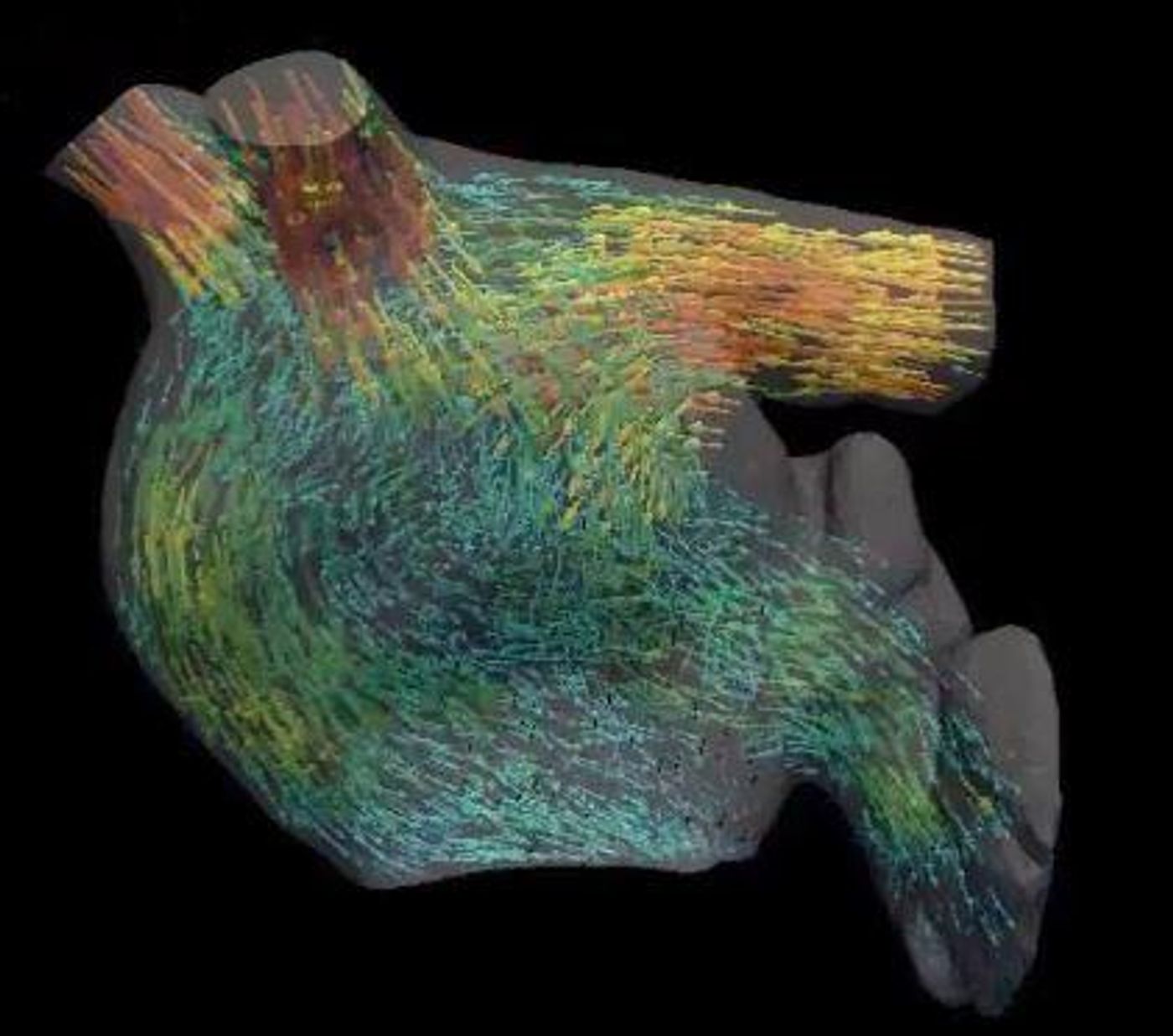Enlargement of the heart, especially the upper left chamber, is known by scientists to be associated with an increased risk for stroke, but a new study from Johns Hopkins University takes computational models and goes one step further, explicitly showing why this type of heart is prone to clot formation and stroke.

The trajectory of blood flowing into the left atrium from the pulmonary veins.
Their research revolves around “computational fluid dynamics,” computer models depicting the path the blood travels during its journey through the heart’s upper left chamber, which could help predict stroke risk in individuals associated with heart disease.
The study began with two patients, both with a history of atrial fibrillation, one woman, age 58, and one man, age 68. The woman had a healthy heart and the man had an enlarged heart. After undergoing specialized CT scans, researchers compared images from the healthy heart versus the diseased heart.
The blood from the diseased heart couldn’t make it through the path. The blood from the healthy heart did make it through though, a manner the researchers describe as “corkscrew-like” and similar to “eddies” that develop in white water rapids. Hiroshi Ashikaga, MD, PhD, said that the computer model “showed us exactly how this [failure] would increase the risk of developing a blood clot,” while the ability to flow in a corkscrew along the path lowers the risk of stroke.
“The vortexes helped move the blood efficiently through the atrium quicker and with less contact with the atrium's surface tissue,” researches summarized. But in the diseased heart, the blood reached the top of the atrium and then “fell in sheets that coat the surface of the heart” rather than forming looping corkscrews.
"As the blood comes in contact with the atrium's surface, it slows down due to shearing forces similar to friction, and this appears to prevent the blood from exiting the chamber as smoothly as it might," said Ashikaga. "The slower the blood moves and the more contact it has with the atrium, the more risk there is for a clot to form."
The same fluid dynamics modeling could be used in the future to predict stroke risk in individuals with cardiovascular disease characterized by a large and weak heart muscle. For now, Ashikaga believes the method better predicts stroke risk than looking at factors like heart size and pumping strength. "Our study fills in a missing diagnostic link between heart function and fluid motion in our understanding of how each can affect stroke risk,” he said.
Ashikaga and the rest of the team next plan on beginning an even larger study again comparing blood flow in diseased versus healthy hearts, following up with patients to record any incidence of stroke and other blood clot-related events.
Their present study was published in the journal
Annals of Biomedical Engineering.
Source:
Johns Hopkins Medicine









